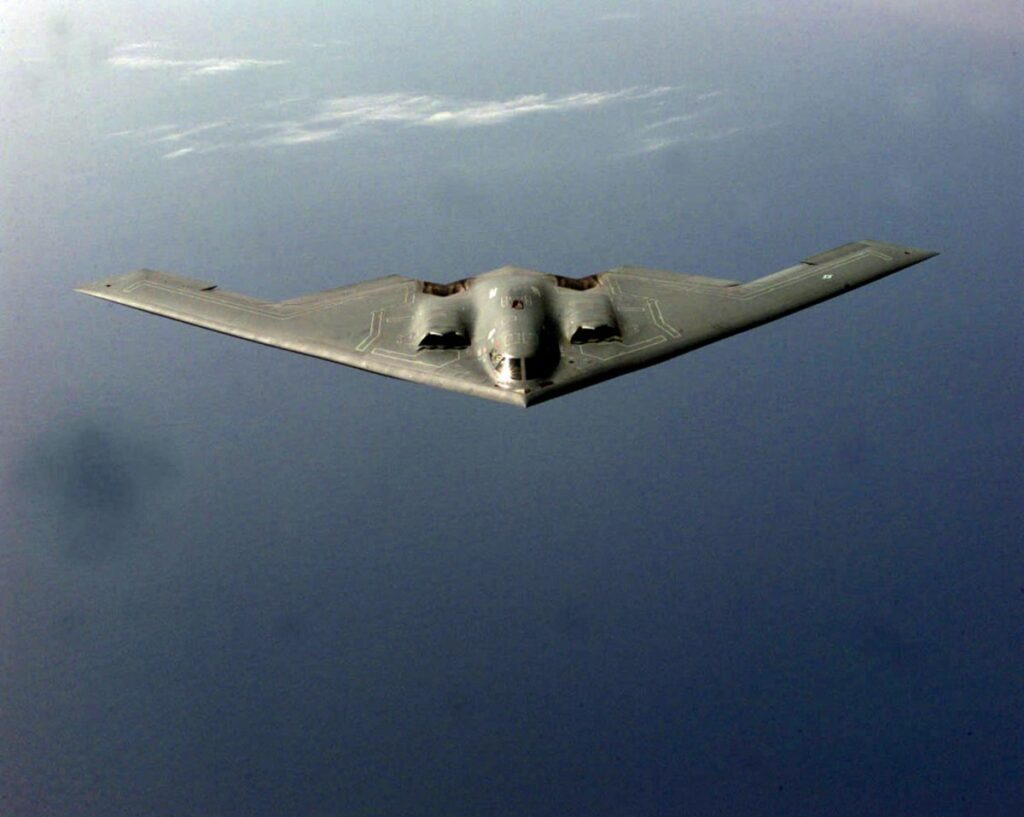Stealth technology has transformed military aviation by enabling aircraft to remain undetected by radar systems. Developed during the Cold War, these invisible warriors of the skies have fundamentally changed the nature of aerial combat. This article explores the history, characteristics, and impact of stealth technology. It traces the origins of stealth technology to the 1960s and highlights the notable advancements in the field, including the development of the F-117 Nighthawk, B-2 Spirit bomber, and F-22 Raptor. The article also discusses the key characteristics of stealth aircraft, such as their shape, use of radar-absorbent materials, and internal weapon bays. It emphasizes how stealth technology has revolutionized modern warfare by allowing aircraft to penetrate heavily defended airspace, conduct precision strikes, and exert influence in global politics. The conclusion looks forward to potential future advancements in stealth technology.
Stealth Technology: A Look into the Invisible Warriors of the Skies
Introduction
Stealth technology has revolutionized the field of military aviation, allowing aircraft to operate undetected by radar systems. Developed during the Cold War, these invisible warriors of the skies have significantly altered the nature of aerial combat. In this article, we will delve into the world of stealth technology, exploring its history, characteristics, and its impact on modern warfare.
History of Stealth Technology
The origins of stealth technology can be traced back to the 1960s when radar reflection and absorption studies were conducted by various defense organizations. The goal was to reduce or eliminate the radar cross-section of an aircraft, making it virtually invisible to enemy detection systems. The first notable application of stealth technology was seen in the Lockheed A-12 reconnaissance aircraft, which paved the way for subsequent stealth aircraft designs.
However, it was not until the 1980s that stealth technology truly came to the forefront with the development of the iconic F-117 Nighthawk, a stealth ground-attack aircraft. The success of the F-117 led to further advancements in stealth technology, giving rise to the renowned B-2 Spirit bomber and the cutting-edge F-22 Raptor, among others.
Characteristics of Stealth Aircraft
Stealth aircraft are built with specific characteristics that enable them to evade radar detection. The most significant feature is their shape, which is designed to deflect radar waves away from the source. By using curved edges, flat surfaces, and angled structures, these aircraft reflect radar signals in directions where they are unlikely to be detected.
Another critical aspect of stealth technology is the use of radar-absorbent materials. These materials are used in the construction of stealth aircraft to absorb and scatter radar waves instead of reflecting them back to the source. Coatings made of special materials, such as radar-absorbent paint, help to reduce the aircraft’s radar cross-section further.
Additionally, stealth aircraft employ advanced avionics systems and internal weapon bays. These systems minimize the external protrusions on the aircraft, reducing their radar signature. Weapon bays allow the aircraft to carry munitions internally, eliminating the need for external stores that could compromise their stealth capabilities.
Impact on Modern Warfare
The introduction of stealth technology has profoundly impacted modern warfare. Stealth aircraft have the ability to penetrate heavily defended airspace without detection, enabling them to conduct critical missions with minimal risk. They have reshaped the way aerial operations are conducted, providing a significant advantage to the countries that possess these advanced capabilities.
Stealth technology has given rise to a new era of precision strike capabilities. With their low visibility, stealth aircraft can carry out targeted attacks on high-value enemy targets without alerting the adversary. This has greatly enhanced the efficiency and effectiveness of military operations, allowing for reduced collateral damage and civilian casualties.
Furthermore, the deployment of stealth aircraft has altered the balance of power in global politics. Countries possessing advanced stealth technology have a significant edge in both offensive and defensive operations. The possession of stealth aircraft acts as a deterrent, exerting influence over potential adversaries and shaping the strategic landscape.
Conclusion
Stealth technology has revolutionized military aviation, providing a new dimension in aerial warfare. With their ability to operate undetected, stealth aircraft have become the invisible warriors of the skies. Their characteristics, including unique shaping, radar-absorbent materials, and advanced avionics systems, have made them highly effective and versatile assets in modern warfare. As technology continues to evolve, the future holds exciting possibilities for further advancements in stealth technology and its applications.
